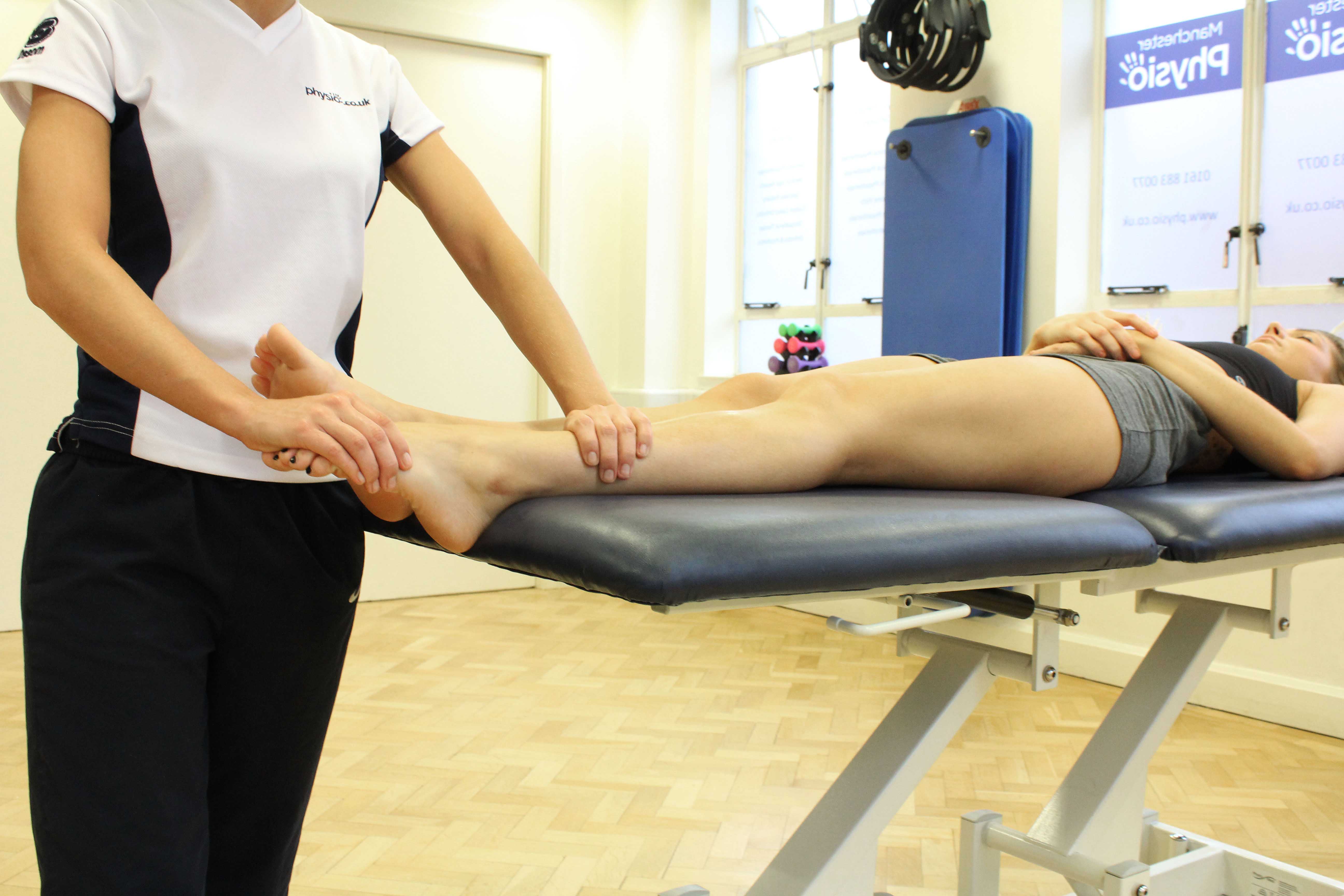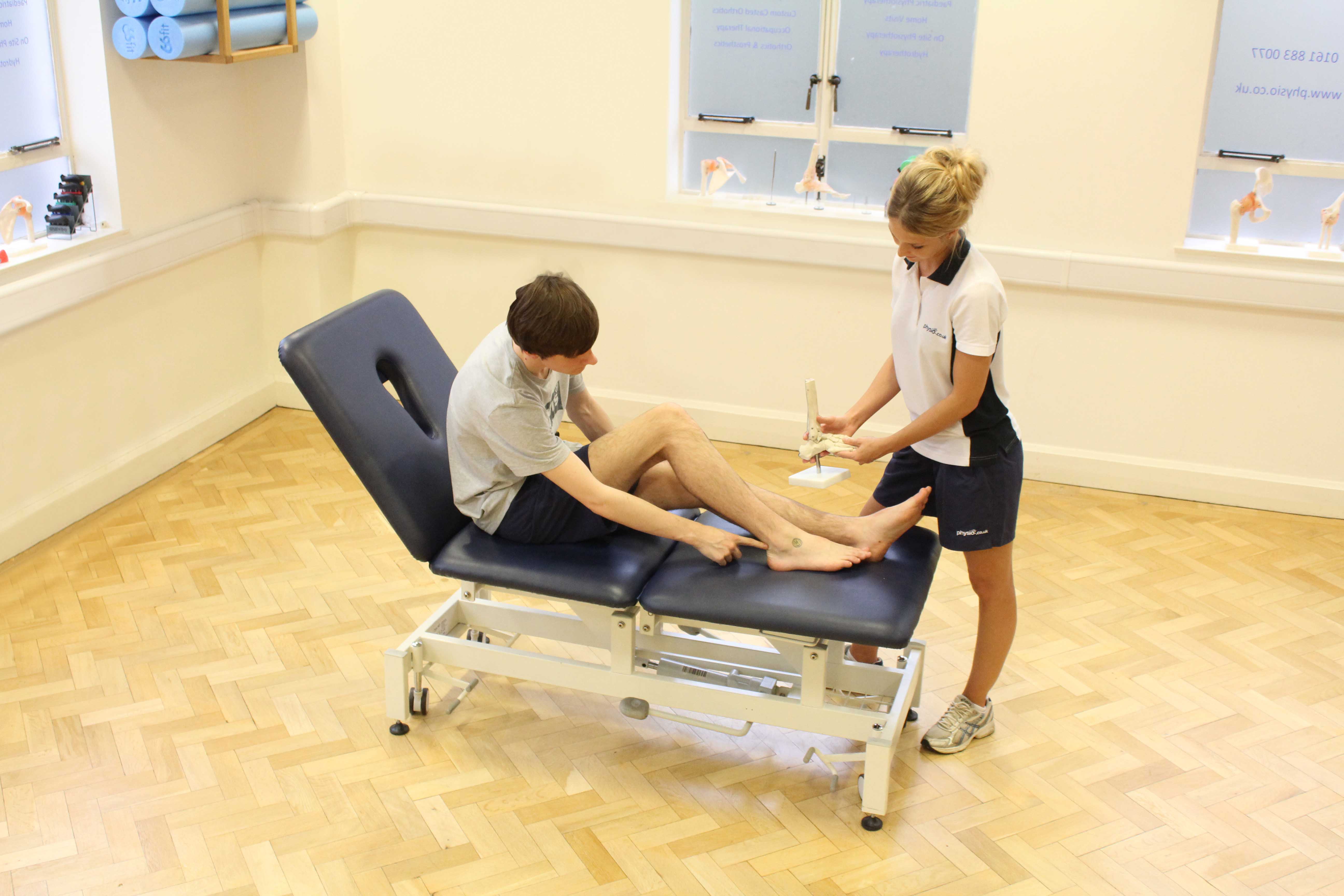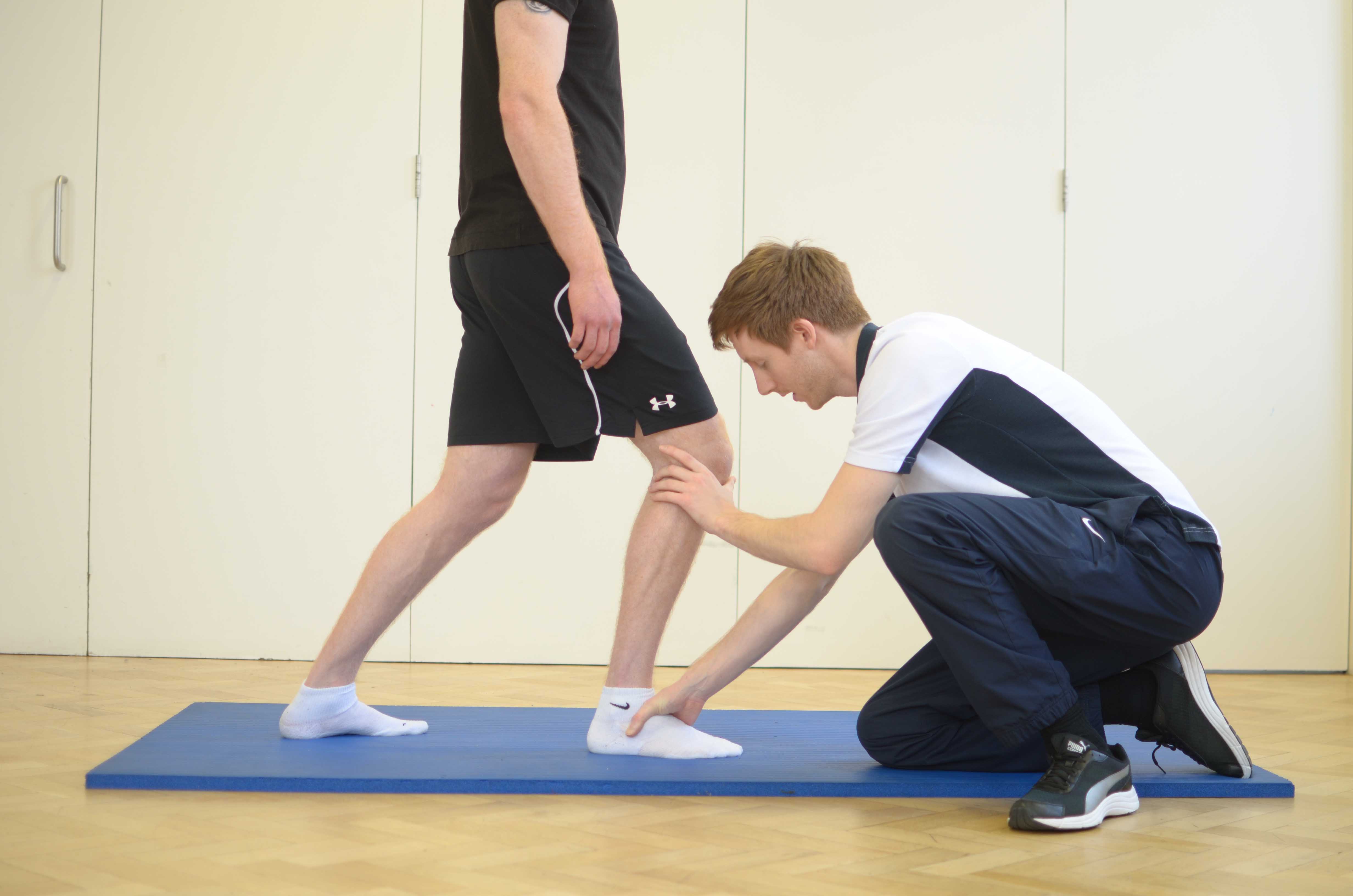Fusion surgery (Arthrodesis) of joints within the foot
There are several types of fusion surgery that may be carried out within the foot. These include:
- Triple fusion - The fusion of the subtalar, calcaneocuboid, and talonavicular joints. Used to treat hind foot pain and/or deformity.
- Tarsometatarsal fusion - Fusion of a joint in the mid-foot. Used to treat painful arthritis within the joint
- Talonavicular fusion - Fusion of a joint in the mid-foot. Used to treat painful arthritis within the joint
- Subtalar fusion – Fusion of the joint below the ankle joint that allows the heel to tilt. Used to treat painful arthritis within the joint
- Small joint fusion – Fusion of the small joints within the toes tends to be carried out as a way of correcting deformities.
- Naviculocuneiform fusion – Fusion of a joint in the mid-foot. Used to treat painful arthritis within the joint
 Above: Passive stretch of the connective tissues in the foot
Above: Passive stretch of the connective tissues in the footFusion surgery is likely to be carried out if you are experiencing severe pain within a joint in the foot that has failed to respond to non-surgical treatment. Fusion surgery makes the joint redundant – once complete you will have no movement within the previously affected joint, it will be fixed into place.
The surgery is not ideal due to all range of movement at the joint being lost, however the reduction in pain may make it worthwhile.
Physiotherapy is important following surgery in order to decrease swelling, keep pain under control and develop a normal walking pattern despite the lost range of motion within the joint.
 Above: Therapist educating client about their foot condition
Above: Therapist educating client about their foot conditionSymptoms after fusion surgery in the foot
You are likely to experience pain following surgery; however this can usually be controlled with pain relief medications. Following your operation you should expect to wear a surgical boot for at least the first 6 weeks, this will be dependent on the exact joints fused.
 Above: mobilisations and stretches of the foot and ankle
Above: mobilisations and stretches of the foot and anklePhysiotherapy following fusion surgery in the foot
0-2 weeks Ice and elevation of foot are important to promote healing and decrease pain and residual swelling. It is likely you will be placed in a hard cast for the first few weeks following your operation. You will be given crutches and advised to keep all weight off your foot to prevent movement and encourage the bones to fuse together correctly.
2-10 weeks Cast removed and surgical boot applied. Despite having your cast removed you will continue to keep all weight off your foot and walk around with crutches. It is important to keep up the strength in the other joints of your lower leg, our physiotherapists will be able to provide you with a seated exercise program to keep up your strength and stamina.
10-12 weeks You will be able to begin putting some weight through your foot whilst in the protection of your surgical boot, and with the aid of crutches.
 Above: Friction massage of the ligaments in the foot
Above: Friction massage of the ligaments in the foot12-15 weeks If x-rays are satisfactory you will be able to remove your surgical boot and begin putting full weight through your foot. Our physiotherapists’ main focus will be on practising a normal walking pattern. Once this is perfected and you are confident with it we will begin to work on more complicated everyday situations such as walking up stairs, tackling uneven terrain, and even getting you back into driving. Our physiotherapists will focus on your personal goals and work towards achieving what it is you want to achieve.
15 weeks + It may take as long as 9 months for the swelling to settle completely, and for this reason we encourage you to return to sport gradually. Physio.co.uk will continue to support you and provide advice and recommendations about the best way to returning to what it is you’d like to return to.
Summary
Surgery to fuse joints of the foot together is only carried out in the most severe arthritic cases. The surgery works well in relieving pain; however the loss in range of movement mean it’s not ideal. Here at Physio.co.uk we will support you following your operation in producing a tailored week-by-week plan to maintain strength during your period within your boot and incorporate progression when the boot is removed. Our physiotherapists will continue to work with you until you are pain free and confident in carrying out everyday tasks.
Call Physio.co.uk now on 0330 088 7800 for more information or to book an appointment please contact us.

 0330 088 7800
0330 088 7800


































